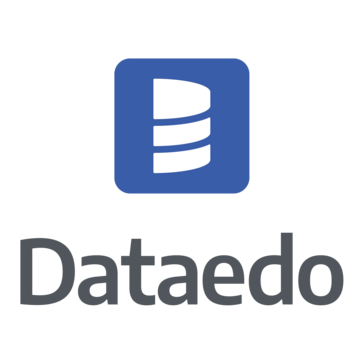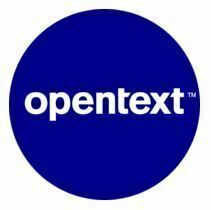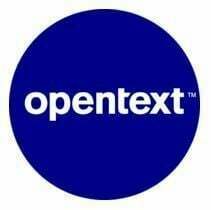4.10
DryvIQ Review
Explore our DryvIQ review: dive into features, security, and automation. Assess pricing, support, updates, and overall value for money. See if it fits!
Comprehensive overview and target audience
DryvIQ presents itself as a sophisticated platform engineered for managing unstructured data at scale across complex enterprise environments. Its core capabilities revolve around discovery, migration, synchronization, and classification of file data residing in various repositories like cloud storage, on premises file servers, and collaboration platforms. The platform aims to provide visibility and control over vast amounts of information often left unmanaged, helping organizations mitigate risks, ensure compliance, and enhance data governance.
The primary target audience for DryvIQ comprises large enterprises; specifically those in highly regulated industries such as finance, healthcare, and government. These organizations typically grapple with massive data volumes, stringent compliance requirements like GDPR or HIPAA, and complex IT infrastructures involving multiple data storage systems. Companies undergoing digital transformation, cloud adoption initiatives, or needing robust data lifecycle management also find DryvIQ particularly relevant. Its ability to handle intricate permission models and metadata during transfers makes it suitable for challenging migration projects.
Key strengths often highlighted include its powerful policy engine and advanced analytics capabilities. Robust DryvIQ security features are central to its design, offering granular controls, detailed audit trails, and secure data handling protocols essential for sensitive information. The platform continuously evolves; DryvIQ updates and new features are released regularly to address emerging data challenges and expand connector support for various storage platforms. This commitment ensures the tool remains effective in a rapidly changing tech landscape.
Evaluating the DryvIQ value for money requires considering its enterprise focus. While a direct DryvIQ pricing comparison against simpler tools reveals a higher investment point, the platform’s depth of features, scalability, and risk reduction capabilities often present a strong return on investment for its target audience. Pricing is typically customized based on data volume and specific deployment needs. Furthermore, comprehensive DryvIQ support and training resources are available, including documentation, knowledge bases, and professional services options, ensuring customers can effectively deploy and manage the platform for optimal results.
User experience and functional capabilities
DryvIQ’s functional capabilities are extensive, designed to address the complex needs of enterprise data management head on. The platform provides powerful tools for discovering, analyzing, classifying, migrating, and synchronizing vast quantities of unstructured data across diverse storage systems. Users can define granular policies to automate data governance tasks, ensuring compliance and reducing risk. The interface, while packed with features, prioritizes control and detailed configuration, reflecting its enterprise focus.
Exploring DryvIQ user experience insights reveals a platform built for technical proficiency. It is not typically a tool for the casual business user; rather, its interface and configuration options cater to IT administrators, data governance professionals, and migration specialists who require precise control over complex operations. Learning how to use DryvIQ effectively involves understanding its policy engine, job configuration settings, and reporting dashboards. While powerful, navigating the depth of options can present a learning curve, demanding dedicated time or formal training.
Executing tasks often involves defining specific jobs. For instance, setting up a migration requires configuring source and destination connectors, defining scope through filters, mapping permissions meticulously, and scheduling the transfer. Similarly, classification jobs necessitate defining rules based on content analysis, metadata, or patterns to tag sensitive data accurately. The platform’s strength lies in its ability to handle these intricate processes at scale, processing terabytes or even petabytes of data with configurable performance settings.
Successful deployment often relies on careful planning and resources like a comprehensive DryvIQ implementation guide. The setup involves configuring platform components, connecting to data sources securely, and potentially fine tuning performance based on network and storage infrastructure. Integrating DryvIQ with other tools is a common requirement for maximizing its value; APIs and export capabilities allow connection to SIEM systems for enhanced security monitoring, DLP solutions for policy enforcement, or archival platforms for long term storage, creating a cohesive data management ecosystem.
While highly capable, users should be aware of potential common problems with DryvIQ. These often stem from the complexity inherent in large scale data projects: intricate permission models causing migration exceptions, performance bottlenecks in constrained environments, or challenges in defining perfectly accurate classification policies initially. These are typically addressable through careful configuration, testing, and leveraging DryvIQ support. Staying current with DryvIQ updates and new features is also crucial, as the platform continuously evolves to enhance performance, add connectors, and introduce new governance capabilities.
Adhering to best practices for DryvIQ usage is key to achieving optimal results. This includes conducting thorough discovery and analysis before undertaking migration or remediation; starting with pilot projects to refine policies and configurations; implementing robust monitoring and alerting for jobs; regularly reviewing audit logs for compliance and security; and maintaining open communication with DryvIQ support for guidance on complex scenarios. Proper planning and execution ensure organizations can fully leverage DryvIQ’s powerful capabilities.
Who should be using DryvIQ
DryvIQ is specifically engineered for large organizations grappling with significant volumes and complexity in their unstructured data landscapes. If your enterprise operates within highly regulated sectors such as finance, healthcare, or government, DryvIQ’s robust compliance, security, and auditing features are directly aligned with your needs. Companies undertaking major digital transformation initiatives, particularly large scale cloud adoption projects, data center consolidations, or complex platform migrations, will find its capabilities essential. Its core strength lies in bringing order to chaotic data ecosystems, managing dark data, and providing the visibility and control often missing across disparate file shares, cloud storage, and collaboration tools.
The platform is primarily intended for use by specific technical and governance roles within an organization, rather than the average business user. Those who benefit most include:
- IT Administrators responsible for managing intricate storage infrastructures and executing complex data movements.
- Data Governance Professionals tasked with defining, implementing, and enforcing data policies consistently across the enterprise.
- Compliance and Risk Officers needing verifiable proof of adherence to regulations like GDPR, HIPAA, CCPA, and internal standards.
- Migration Specialists dedicated to planning and executing large scale, sensitive data transfers between diverse systems without disruption.
- Information Security Teams focused on identifying, classifying, and mitigating risks associated with sensitive or improperly stored data.
A classic DryvIQ use case scenario involves migrating petabytes of data from aging on premises file servers to a hybrid cloud environment, ensuring intricate NTFS permissions are accurately translated or mapped to new structures, while simultaneously identifying and quarantining specific types of sensitive information discovered during the transfer. This highlights its suitability for strategic, high stakes data projects. Consequently, DryvIQ is less suited for small businesses or teams needing only simple file synchronization or basic transfer tools. Maximizing its potential requires technical proficiency and a commitment to adhering to Best practices for DryvIQ, ensuring successful deployment, optimized performance, and effective ongoing data management.
Unique Features offered by DryvIQ
DryvIQ distinguishes itself through extensive customization options designed to meet the specific needs of large enterprises. At its heart lies a powerful and highly configurable policy engine. This engine allows organizations to define intricate rules governing every aspect of data management: from granular control over migration paths and permission mappings to sophisticated content analysis for automated data classification and tagging. Users can tailor policies for data synchronization between platforms or establish automated remediation actions based on specific criteria, ensuring data governance aligns precisely with corporate requirements.
Unique features further enhance its adaptability. DryvIQ excels at handling complex file system permissions across disparate platforms like NTFS, NFS, and cloud object storage, ensuring fidelity during transfers. It meticulously preserves or transforms metadata, a critical capability often lacking in simpler tools. The platform’s architecture is built for extreme scalability, processing petabytes of data efficiently. Customizing DryvIQ for business growth means leveraging these features to directly support strategic initiatives; whether accelerating cloud migration securely, reducing the attack surface by identifying and quarantining sensitive data, or demonstrating auditable compliance.
While powerful, the depth of customization makes DryvIQ less suitable for simpler needs. Consequently, DryvIQ for small businesses is generally not a practical fit; the platform’s complexity and enterprise pricing model align better with organizations managing vast, intricate data landscapes. A key aspect of its enterprise value, however, is its ability to fit within a broader security and governance stack. Integrating DryvIQ with other tools is facilitated through robust APIs and data export capabilities. This allows seamless connection to Security Information and Event Management systems, Data Loss Prevention solutions, eDiscovery platforms, and archival storage, creating a unified ecosystem for comprehensive data oversight and lifecycle management. This integration capability underscores its role as a central component in an enterprise data strategy.
Pain points that DryvIQ will help you solve
Enterprises today face numerous challenges managing the sheer volume and complexity of their unstructured data. DryvIQ is engineered to directly address these critical issues, transforming data chaos into manageable assets. If your organization struggles with any of the following problems, DryvIQ offers potent solutions.
Lack of Visibility and Control: Are you unsure where your critical data resides across countless file shares, cloud platforms, and collaboration tools. DryvIQ provides deep discovery and analysis capabilities, illuminating dark data and giving you comprehensive oversight.
Complex and Risky Migrations: Moving large datasets, especially to the cloud or during consolidations, is fraught with risk. DryvIQ mitigates this by handling intricate permission models, preserving metadata fidelity, and ensuring secure, efficient transfers at scale, minimizing disruption and data loss.
Meeting Stringent Compliance Demands: Demonstrating adherence to regulations like GDPR, HIPAA, or internal policies requires consistent data handling and auditing. DryvIQ enables automated data classification, policy enforcement, and detailed reporting, simplifying compliance and reducing associated risks.
Managing Disparate Systems and Permissions: Ensuring correct access controls across different storage platforms is a significant headache. DryvIQ excels at understanding and translating complex permission structures between systems like NTFS and cloud environments.
Securing Sensitive Information: Identifying and protecting sensitive data scattered across the enterprise is paramount. DryvIQ’s content analysis and classification engine helps locate this data, allowing you to apply appropriate security measures or remediation actions automatically.
Inefficient Manual Processes: Relying on manual efforts for data governance, classification, or migration is slow, costly, and error prone. DryvIQ automates these tasks through its powerful policy engine, freeing up valuable IT and governance resources. Customizing DryvIQ for business growth allows these automated policies to adapt as your data landscape evolves.
Scalability Limitations: Existing tools often buckle under the pressure of petabyte scale environments. DryvIQ is built for massive scale, ensuring performance even with vast data volumes. This focus means evaluating DryvIQ for different businesses sizes clearly points towards large enterprises; smaller organizations with simpler needs likely find it overly complex.
Siloed Data Management: Data insights and controls need to integrate with broader security and operational frameworks. Integrating DryvIQ with other tools like SIEM, DLP, or eDiscovery platforms creates a cohesive ecosystem, enhancing overall security posture and data lifecycle management.
Scalability for business growth
Business growth invariably means data growth. As organizations expand, so does the volume, velocity, and variety of their unstructured data. Without a platform designed to handle this expansion, data management can quickly become a significant bottleneck, hindering progress and increasing risk. DryvIQ is architected from the ground up with scalability at its core, ensuring that your data management capabilities grow seamlessly alongside your business.
The platform’s ability to handle petabyte scale environments is not merely a feature; it is fundamental to its design. Whether you are migrating increasing volumes of data to the cloud, synchronizing information across newly acquired business units, or applying governance policies to an ever expanding digital footprint, DryvIQ’s performance scales efficiently. This eliminates concerns about outgrowing your data management solution. It ensures consistent performance and reliability even under the substantial loads generated by large enterprise operations undergoing rapid change.
This inherent scalability provides several key advantages for growing businesses:
- Predictable Performance: DryvIQ’s distributed architecture allows for scaling processing power horizontally, ensuring that large scale migration, classification, or synchronization jobs complete within expected timeframes, regardless of data volume increases.
- Future Proofing Investments: Investing in DryvIQ means acquiring a solution built to accommodate future needs. Customizing DryvIQ for business growth allows you to adapt its powerful policy engine and workflows to new data sources, evolving compliance mandates, and expanding infrastructure without needing to replace the core platform.
- Supporting Strategic Initiatives: Scalability enables confident execution of major projects like data center consolidation, comprehensive cloud adoption, or divestitures. Customizing DryvIQ for business scalability means configuring the platform to handle peak loads during these critical transitions, ensuring data integrity and minimal disruption.
Ultimately, DryvIQ transforms data management from a potential growth inhibitor into a strategic enabler. Its robust scalability ensures that as your business reaches new heights, your ability to discover, manage, govern, and secure your vital unstructured data keeps pace, providing a solid foundation for continued success.
Final Verdict about DryvIQ
After careful consideration of its extensive capabilities and specific market focus, our **Final verdict on DryvIQ** is overwhelmingly positive for its intended audience. This platform stands out as a powerful, enterprise grade solution meticulously engineered to tackle the immense challenges of unstructured data management in complex environments. Its strengths lie in robust discovery, secure and precise migration, sophisticated classification, and comprehensive governance automation, particularly across disparate storage systems and intricate permission landscapes. DryvIQ effectively addresses critical pain points like lack of data visibility, compliance burdens, and the inherent risks of large scale data movement.
The platform is clearly not designed for everyone; its depth, customization options, and associated investment level firmly place it within the realm of large enterprises, especially those operating under stringent regulatory requirements. Organizations needing to manage petabytes of data, execute complex cloud adoption strategies, or enforce granular data policies will find DryvIQ’s feature set indispensable. The user experience, while comprehensive, demands technical proficiency, making it ideal for dedicated IT administrators, data governance specialists, and security teams rather than casual business users. Successful deployment necessitates careful planning, resource allocation, and often leveraging DryvIQ’s support services.
Ultimately, for large organizations struggling with data chaos and seeking control, compliance, and efficiency at scale, DryvIQ represents a compelling investment. Its ability to handle complexity, ensure data integrity during transitions, automate governance, and scale alongside business growth provides significant value, mitigating risks and enabling strategic data initiatives. If your enterprise fits this profile and possesses the resources to manage such a powerful tool, DryvIQ comes highly recommended as a leader in the unstructured data management space.
Advantage
Disadvantage
Fast, scalable migration across cloud & on-prem
Gain deep insights into unstructured data
Automate complex data management and migration tasks
Maintain security, permissions, and compliance easily
Connects a vast range of storage platforms
Disadvantage
Can be complex to configure initially
Enterprise pricing may be high for some
Requires time and training to use effectively
Migrations can strain network and system resources
Potentially overkill for smaller, simpler migration needs
Rating
Business Plus
$$25 per Month
Business Plus
$$25 per Month
Enterprise
$$35 per Month
Web Based
Windows
Mac OS
Linux
Android
iOS
Phone Support
Email/Help Desk
AI Chat Bot
Live Support
24/7 Support
Forum & Community
Knowledge Base
Live Online
Documentation
Videos
In Person
Webinars
Implementation
Web Based
Windows
Mac OS
Linux
Android
iOS
Support
Phone Support
Email/Help Desk
AI Chat Bot
Live Support
24/7 Support
Forum & Community
Knowledge Base
Training
Live Online
Documentation
Videos
In Person
Webinars
Group text
Alternative Products
Frequently Asked Questions
What exactly is DryvIQ?
DryvIQ is an advanced enterprise software platform focused on intelligent file migration and unstructured data management, enabling organizations to analyze, classify, move, and synchronize large volumes of data across various cloud and on-premises storage systems.
How can DryvIQ help me?
DryvIQ can help you by dramatically accelerating complex, large-scale file migrations (e.g., to Microsoft 365, Box, Google Workspace), providing deep insights into your unstructured data to identify sensitive information (PII, CUI) for compliance and security, reducing risks associated with data sprawl, ensuring content synchronization across platforms, and optimizing storage by identifying redundant or trivial data.
Who is DryvIQ best suited for?
DryvIQ is best suited for large enterprises, government agencies, and organizations in highly regulated industries (like finance, healthcare, legal) that manage vast amounts (terabytes to petabytes) of unstructured data across multiple, often complex, storage repositories and require high speed, security, and intelligence for migration, governance, and compliance tasks.
What are the key features of DryvIQ?
Key features include ultra-high-speed data transfer architecture optimized for massive scale, AI-driven data discovery and classification during migration or in-place, bi-directional and real-time synchronization capabilities, support for a wide range of connectors (cloud storage, ECMs, file shares), granular policy controls for data handling, preservation of file fidelity (metadata, permissions, versions), and detailed auditing and reporting.
How does DryvIQ compare to competitors?
Compared to competitors, DryvIQ often stands out due to its superior speed and scalability for petabyte-level projects, its sophisticated AI/ML engine for data classification and insights *during* transfer, and its robust handling of complex permissions and challenging migration scenarios that might overwhelm simpler tools focused primarily on smaller-scale or less complex moves.
What is the pricing for DryvIQ?
DryvIQ utilizes custom, quote-based pricing tailored to specific customer needs; costs depend on factors such as the total volume of data being managed or migrated, the specific features and modules required (e.g., migration, classification, sync), the number and types of platform connectors needed, and the level of support or professional services involved.
Is DryvIQ easy to implement and use?
While DryvIQ is a powerful enterprise tool, implementation complexity can vary depending on the scale and intricacies of the project (number of sources/destinations, specific policies). It requires technical understanding for configuration and management, though its interface aims for clarity given its capabilities. It’s generally considered manageable for experienced IT teams, and DryvIQ offers support and professional services to assist with deployment and usage.
Is DryvIQ worth it?
For organizations grappling with massive data volumes, complex migration challenges, stringent compliance requirements, and the need for deep data intelligence, DryvIQ is often considered worth the investment due to its potential for significant time savings, risk reduction, enhanced data security, and improved governance, providing substantial ROI on large-scale data management initiatives.








